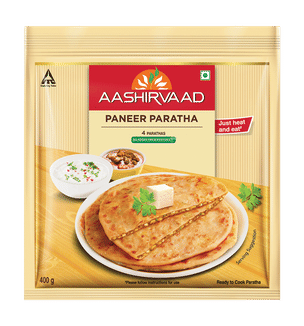We all love a good paratha. It’s the right amount of crispy, flavourful, and filling. With the rise of 10-minute delivery and easy-to-buy packaged foods, many of us are swapping homemade meals for convenience.
The big question is: Are ready-to-eat parathas a smart choice for your health? With brands now focusing on whole wheat, high-fibre, and fortified ingredients, RTE parathas are more than just convenient; they can be part of a healthy diet, too. Read till the end to know all about it.
What Are Ready-to-Eat Parathas?
Ready-to-eat or “RTE” wheat paratha is a definitive alternative to the traditional homemade versions. They offer the same crispy, flaky goodness with minimal effort. These packed parathas come in either frozen or pre-cooked varieties. Also, there are plenty of options to order through 10-minute delivery services.
The major appeal of RTE parathas lies in their sheer convenience. It’s practically suited to the widely different preferences of consumers, like plain, stuffed, whole wheat, and multigrain. Some brands even offer high-fibre or protein-rich variants for health-focused consumers.
Breakdown of Ingredients of RTE Parathas
The nutritional value of a ready-to-eat paratha largely depends on its ingredients. Gone are the days when ready-to-eat (RTE) parathas were considered unhealthy. Many modern brands now prioritise healthier ingredients to make them a more balanced meal option.
What’s Inside?
- Whole wheat and multigrain flour: It is usually higher in fibre and it helps in digestion. This keeps you full longer.
- Healthy oils like sunflower or rice bran oil: Lower in saturated fats compared to traditional hydrogenated oils.
- Nutrition: Some brands add iron, folic acid, and essential vitamins to the packed parathas. This makes them nutritionally beneficial.
Some Points to Know:
- There might be some RTE paratha brands that use preservatives and emulsifiers. However, there are Indian brands that focus on natural ingredients with minimal processing.
- Convenience without compromising on health is the biggest advantage of RTE Paratha, especially with quick 10-minute delivery options.
- Instead of hydrogenated fats, brands now use ghee or butter in moderation.
Nutrition Inside of an RTE Paratha
The nutritional content of ready-to-eat (RTE) parathas varies depending on ingredients, brand, and preparation methods. Below is a comparison of a stuffed RTE paratha to a regular whole wheat paratha:
| Nutrient
(Per 1 Paratha – ~80g) |
RTE Whole Wheat Paratha | RTE Stuffed Paratha
(Aloo) |
| Calories | 180-220 kcal | 280-350 kcal |
| Carbohydrates | 25-30g | 35-40g |
| Fibre | 4-6g | 3-4g |
| Protein | 6-8g | 5-7g |
| Fat | 6-10g | 10-14g |
| Sodium | 200-400mg | 300-500mg |
Benefits of Eating an RTE Paratha:
- Whole wheat/multigrain RTE parathas offer similar nutrition to homemade ones.
- Moderate sodium levels are often manageable when paired with fresh sides.
- Stuffed parathas provide extra fibre and protein, making them a more complete meal.
- It’s extremely quick and easy, especially with 10-minute delivery services.
- It comes with a long shelf life. This makes them a handy backup meal option.
- A warm, flaky paratha sounds perfect—especially when you can get it through a 10-minute delivery without any effort.
- When made with whole wheat and balanced ingredients, RTE parathas can be just as nutritious as homemade ones.
Suitability for Varied Diets:
- For Diabetics: Check for whole wheat options and low glycemic index.
- For Weight loss: Best consumed in moderation. Often paired with protein and fibre.
- For Kids: Opt for whole-grain versions with minimal to no additives.
Over To You
RTE parathas are definitely a healthy and time-saving option. Ready-to-eat parathas come with sheer convenience; especially with 10-minute delivery. This makes them a quick meal solution in your daily diet.

